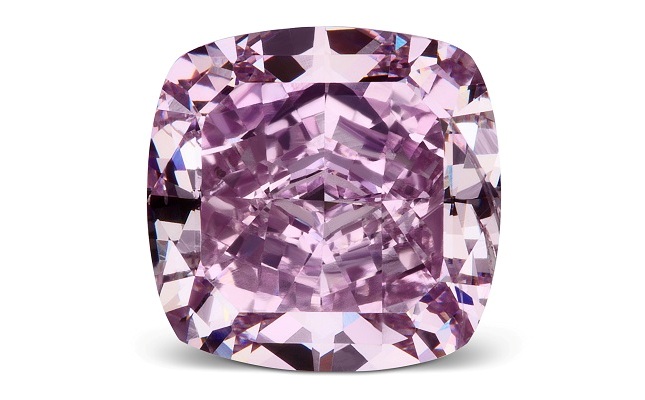NY Firm Lending Out 1.6-Ct Fancy Vivid Purple Diamond to LA Museum
December 01, 16
(IDEX Online) – New York company Rio Diamond Manufacturing Corp is lending out a rare diamond called The Victorian Orchid, a Fancy Vivid Purple diamond of SI2 clarity, for display at the Natural History Museum of Los Angeles County.
The diamond will be made available to the firm's clients after the museum has completed its research and following the 'Diamonds: Rare Brilliance' exhibition which runs from next month through to March 2017. The cushion-shape diamond weighs 1.64 carats.
"There are not many Fancy Vivid Purples in the world, let alone over 1 carat in size," said the company's Jose Batista. "Purple is extremely rare, stones of this color and intensity are not often discovered."
The Victorian Orchid will be on display in a designer flower ring setting, inspired by the orchid flower, strongly desired but rarely found, he said.
"For all of us here at Rio Diamond Corp. it is a real pleasure and rewarding to own a diamond of such rarity," said Batista. "An opportunity like this doesn't come by very frequently. More importantly for me is having the privilege of seeing my father Jose O. Batista owner and President of Rio Diamond Corp., cut and polish such a rare gem.
"Natural purple color diamonds with no modifiers are rare. They are usually described with various hue modifiers such as brown, gray and pink. The Orchid is graded fancy Vivid Purple by the GIA, making it a significant diamond."
He said the geographic origin of purple diamonds is not mentioned on grading reports. "One recurring source, however, is Russia's Siberia region. Purple diamonds have often been recovered from the pipes of the Mir kimberlite field (comprising the Dachnaya, Internatsional'naya, Mir, and Sputnik mines). They typically account for 1% of all diamonds from the deposits in those mines, though as much as 6% of some parcels have been described as purple. The majority of purple diamonds from the Siberian deposits are pale, but diamonds with higher purple color saturation are sometimes found."